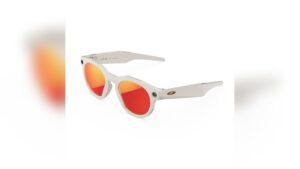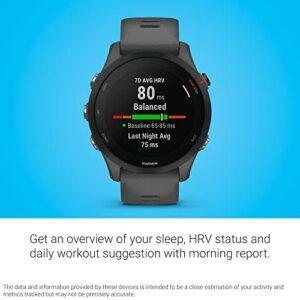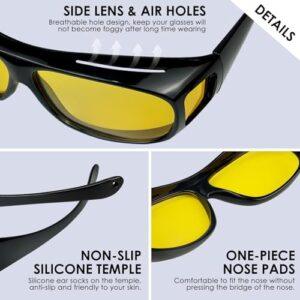Have you ever wondered how tight your watch bracelet should be? Too loose, and your watch might slide around or even fall off.
Too tight, and it can feel uncomfortable or leave marks on your wrist. Finding the perfect fit isn’t just about comfort—it can affect how your watch looks and even how long it lasts. Keep reading, and you’ll discover simple tips to get your watch bracelet just right, so it feels great and stays secure all day long.
Ideal Bracelet Fit
The ideal bracelet fit for a watch means it feels comfortable and stays in place. It should not be too loose or too tight. The right fit lets your wrist breathe and keeps the watch secure. A good fit also helps the watch look its best on your wrist.
Finding the perfect fit takes some care. The bracelet should move a little but not slide around too much. It should never pinch your skin or leave marks. Knowing the signs of a proper fit helps you adjust the bracelet correctly.
Signs Of A Proper Fit
The watch bracelet should sit flat against your wrist. It should move slightly when you bend your wrist. The bracelet should not leave red marks or feel tight. You should feel comfortable wearing it all day. The watch face stays centered on top of your wrist. These signs show the fit is just right.
Common Fit Mistakes
Many people wear their bracelets too loose. This causes the watch to slide or spin on the wrist. Others make the bracelet too tight, which can pinch or hurt the skin. Avoid leaving gaps between the bracelet and wrist. Do not tighten the bracelet to the point of discomfort. These mistakes can harm both comfort and style.
Factors Affecting Fit
Finding the right fit for a watch bracelet is not just about comfort. Several factors affect how tight or loose the bracelet should be. Understanding these factors helps you wear your watch perfectly. It also protects your skin and the watch itself.
Each person’s wrist is unique. The watch style and the bracelet material also play big roles in the fit. Let’s explore these important points.
Wrist Size And Shape
Wrist size varies from person to person. Some wrists are thin, others are thick. The shape matters too. Round wrists differ from flat or bony ones. A tight bracelet on a thick wrist may feel loose on a thin wrist. Measure your wrist before adjusting the bracelet. This helps avoid discomfort and slipping.
Watch Weight And Design
Heavy watches need a snug fit. This stops the watch from sliding around. Light watches can fit a bit looser without falling off. The watch design also impacts fit. Large watch faces require a secure bracelet. Smaller watches allow more freedom in bracelet tightness.
Bracelet Material
Bracelets come in metal, leather, silicone, and fabric. Metal bracelets often need a tighter fit. They can pinch if too loose. Leather and fabric bracelets stretch over time. A slightly tighter fit at first is better. Silicone bracelets offer flexibility and comfort. They can be worn a bit looser without risk.
Adjusting The Bracelet
Adjusting the bracelet of a watch is important for comfort and proper fit. A bracelet that is too tight can cause discomfort and leave marks on your wrist. A loose bracelet can move too much and may even risk falling off. Learning how to adjust it correctly helps you wear your watch with ease all day long.
Removing And Adding Links
Most metal watch bracelets have removable links. These links allow you to make the bracelet smaller or bigger. Use a small tool to push out the pins holding the links together. Remove the right number of links to fit your wrist. To make the bracelet larger, add extra links by inserting the pins back in place.
Micro-adjustments
Many bracelets have micro-adjustment holes on the clasp. These holes let you fine-tune the bracelet length without removing links. Move the spring bar to a different hole to make small changes. Micro-adjustments help achieve a perfect fit and add extra comfort.
Tools Needed
You need simple tools to adjust a watch bracelet. A small pin pusher or a spring bar tool helps remove links and move the spring bar. A small hammer and block can assist with stubborn pins. Use a soft cloth to protect the watch from scratches during adjustments.
Comfort Vs Security
Choosing the right fit for your watch bracelet balances comfort and security. Too tight feels uncomfortable and traps sweat. Too loose risks the watch slipping or moving too much. Understanding this balance helps you enjoy wearing your watch all day without trouble.
Allowing Wrist Movement
Your wrist moves constantly. The bracelet should move a little, not stay stiff. A slight gap lets your wrist flex naturally. It stops the watch from digging into your skin during motion. Comfort depends on this small space.
Preventing Slippage
The watch must stay in place. A loose bracelet lets the watch slide around. It can fall or get damaged. Fit the bracelet snug enough to hold the watch steady. This security protects your valuable timepiece.
Avoiding Skin Irritation
Tight bracelets cause skin irritation and redness. Sweat and dirt build up under a tight fit. This can lead to itching or rashes. A comfortable fit allows air to flow. Your skin stays healthy and fresh all day.
Seasonal And Activity Considerations
Seasonal changes and daily activities can affect how your watch bracelet feels on your wrist. The right fit is not the same all year. Your wrist size can change with the weather and what you do. Adjusting your watch bracelet keeps it comfortable and secure.
Adjusting For Temperature Changes
Warm weather makes your wrist swell a little. The heat causes your skin to expand. A tight bracelet can feel uncomfortable or leave marks. Loosen your bracelet slightly in summer to avoid pressure. In cold weather, your wrist shrinks. A loose bracelet can slide around too much. Tighten your bracelet just enough to keep it steady but not tight.
Fit During Physical Activities
Exercise and physical work make your wrist swell from movement and sweat. A tight bracelet can stop blood flow or pinch the skin. A loose bracelet can move too much and distract you. Adjust your watch for a snug but flexible fit. It should stay in place without feeling tight. This prevents discomfort and keeps your watch safe.

Credit: www.reddit.com
Professional Sizing Services
Professional sizing services ensure your watch bracelet fits perfectly. They adjust the bracelet to match your wrist size with precision. This prevents discomfort and protects your watch from damage.
Experts use special tools to remove or add links. They also check the clasp and overall fit. A well-sized bracelet enhances your watch’s look and comfort.
When To Seek Help
Choose professional sizing if your bracelet feels too tight or loose. Avoid DIY adjustments without the right tools. Struggling with pin removal or unsure about fit? Visit a professional watch service. They prevent mistakes that could harm your watch.
What To Expect
The process is quick and careful. Experts first measure your wrist accurately. They then remove or add links as needed. Finally, they check the bracelet’s movement and comfort. You leave with a perfectly fitted watch, ready to wear all day.
Maintenance Tips
Maintaining the right fit for your watch bracelet is key to comfort and durability. Regular care helps your watch stay secure and looking good. Follow simple steps to keep your bracelet in perfect shape.
Regular Fit Checks
Check your watch fit often. Your wrist size can change during the day. Heat or activity can make your skin swell or shrink. Adjust the bracelet to avoid tightness or looseness. A good fit moves slightly but does not slide around. This prevents wear on the links and your skin.
Cleaning And Care
Clean your bracelet regularly to remove sweat and dirt. Use a soft cloth or a gentle brush with mild soap. Avoid harsh chemicals that can damage metal or leather. Dry it well to stop rust or skin irritation. Store your watch in a dry place when not worn. This keeps the bracelet fresh and strong for daily use.

Credit: www.reddit.com

Credit: www.reddit.com
Frequently Asked Questions
How Tight Should A Watch Bracelet Fit?
A watch bracelet should fit snugly but comfortably. It shouldn’t pinch or leave marks. Allow slight movement for wrist expansion.
Can A Watch Bracelet Be Too Tight?
Yes, a tight bracelet can cause discomfort and restrict blood flow. It may also damage the watch or skin.
How To Adjust A Watch Bracelet Size Correctly?
Use removable links or micro-adjustments on the clasp. Adjust for a secure fit without tightness or looseness.
Why Does My Watch Bracelet Feel Loose?
A loose bracelet can cause the watch to slide and catch. It may need resizing or clasp adjustment.
Conclusion
A watch bracelet should fit comfortably on your wrist. It should not pinch or slide too much. Tight bracelets can cause discomfort and skin marks. Loose bracelets risk falling off or getting damaged. Aim for a snug fit that moves slightly with your wrist.
Check the fit often, especially in hot or cold weather. Adjust links or clasps as needed. A good fit keeps your watch safe and comfortable all day. Simple care helps your watch look great and last longer.

Madison Clark is a footwear expert and the voice behind MyStyleGrid.com. She specializes in honest shoe reviews, style tips, and practical guides to help readers find the perfect pair for any occasion. With years of experience in blogging and content creation, Madison makes footwear knowledge simple, stylish, and easy to follow.







